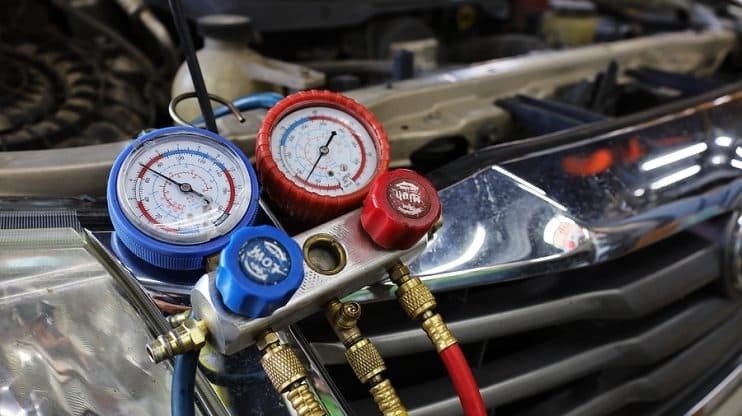Compressors play an important role in many industrial and commercial applications. They provide compressed air or gas for various machines and processes. Over time, compressor parts wear out or become less efficient, which can affect the overall system’s performance. Recognizing when to replace these parts is important to avoid costly breakdowns or downtime. This article discusses clear signs that indicate it is time to replace compressor components to keep the system running smoothly.
- Unusual Noises and Vibrations
One of the first signs that you might need Compressor replacement parts is the appearance of unusual noises or vibrations. Loud banging, knocking, or grinding sounds often point to worn bearings, loose components, or damaged valves. Vibrations that are stronger than usual can indicate imbalance or part failure. Ignoring these signals can lead to more serious damage to the compressor. Detecting and addressing these issues early can extend the life of the machine and prevent unexpected stops.
- Decreased Air Output or Pressure
When compressor parts start to fail, the output of compressed air or gas often drops below normal levels. A steady decline in pressure or volume affects the operation of connected equipment. This may happen due to leakages in seals, worn pistons, or damaged valves inside the compressor. Reduced performance forces the system to work harder, which can increase wear and energy costs. Monitoring air output regularly helps identify when parts no longer perform at their best and require replacement.
- Increased Energy Consumption
A rise in energy use without a clear cause can signal problems with compressor parts. As components wear out, friction and inefficiencies increase, which makes the machine consume more power to maintain the same output. For example, damaged cylinders or worn rings reduce compression efficiency, and cause motors to work harder. Tracking energy usage and comparing it with normal levels can reveal hidden issues. Addressing these problems early improves energy efficiency and lowers operational expenses.
- Overheating on a Regular Basis
Overheating is another sign showing that compressor parts might need replacement. Excessive heat can result from worn bearings, poor lubrication, or clogged cooling paths. When parts do not move smoothly or cool properly, heat builds up quickly and can damage sensitive components. Overheated compressors risk breakdowns and shortened service life. Regularly checking temperature levels and performing maintenance helps identify when parts have degraded and can no longer function safely.
- Presence of Excess Oil or Moisture in Air Lines
Finding too much oil or moisture in the compressed air lines reveals issues with internal parts. Oil may leak from seals or fail in separators designed to keep the air clean. Moisture can appear when dryers or filters wear out. Contaminants in the air reduce product quality and harm downstream equipment. Detecting unusual oil or water content signals the need to inspect and replace faulty parts. Maintaining clean and dry air is critical for reliable compressor operation.
- Persistent Leaks or Loss of Pressure
Leaks affect compressor efficiency and can occur due to damaged gaskets, seals, or joints. Persistent air or gas leaks cause pressure drops and continuous compressor running. This increases wear on parts and raises energy costs. Leaks are often visible through hissing sounds, bubbles at joints, or reduced system pressure.
These leaks reduce the overall reliability of the compressor and can put extra strain on connected equipment. Catching and fixing leaks early prevents further deterioration and helps maintain smooth operation. Repairing or replacing the leaking parts restores proper function and prevents further damage.
- Excessive Wear or Visible Damage to Parts
Regular inspection may reveal signs of wear or damage on compressor parts such as cracks, corrosion, or worn surfaces. Visible wear indicates that parts are failing to perform their function properly. Worn pistons, valves, or bearings reduce the compressor’s effectiveness and reliability. Operating with damaged parts can lead to complete failure and more expensive repairs.
Ignoring these signs can also compromise the safety of the equipment and operators. Routine visual checks combined with proper testing ensure that these issues are spotted before causing system downtime. Proper inspection practices help identify components that need replacement before they result in system breakdowns.
- Repeated Cycle Failures or Startup Issues
If a compressor fails to start regularly or cycles on and off more frequently than usual, it may have faulty parts. Problems with the start valve, pressure switch, or motor components can cause erratic behavior. These issues reduce efficiency and increase mechanical stress on the system. Repeated startup difficulties often mean that parts have deteriorated beyond normal limits. Timely replacement of faulty components helps maintain consistent operation and prevents unplanned outages.
Recognizing the need for Compressor replacement parts early is important for maintaining reliable equipment. Unusual noises, lowered air pressure, increased energy use, overheating, contamination, leaks, visible damage, and startup problems all signal the need for part replacement. Addressing these issues early can help avoid costly repairs and downtime. Regular inspection and maintenance support longer compressor life and consistent performance.

